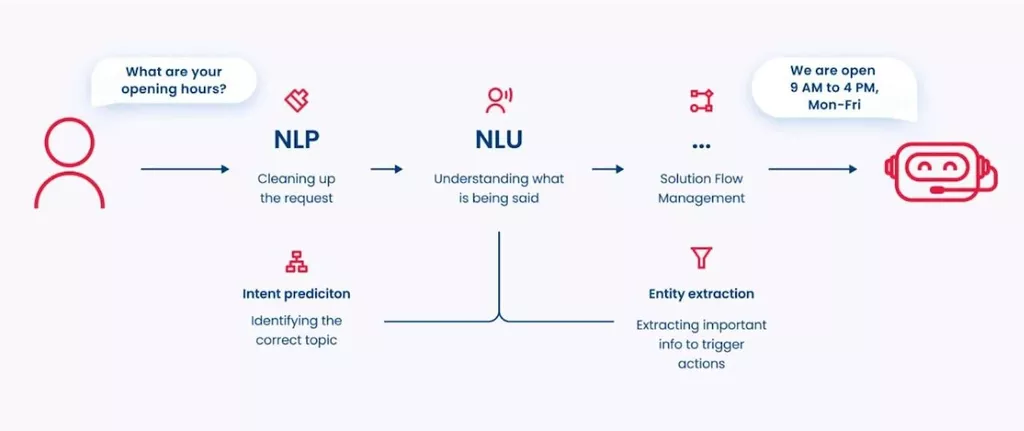Use .toHaveBeenCalledTimes to guarantee that a mock operate obtained called actual number of instances. Use .toHaveBeenCalled to ensure that a mock function was known as. Use .rejects to unwrap the reason of a rejected promise so any other test object matcher could be chained. Use resolves to unwrap the value of a fulfilled promise so some other matcher could be chained. For additional Jest matchers maintained by the Jest Community try jest-extended.
Not The Answer You Are Trying For? Browse Different Questions Tagged Testingfunction-points Or Ask Your Own Question
However, on extraordinarily rare occasions, even a handbook mock isn’t appropriate in your purposes and you have to construct the mock yourself inside your test. Indicates that the module system should never return a mocked model of the specified module from require() (e.g. that it should always return the actual module). Use the jest.Mocked utility sort or the jest.mocked() helper technique to have your mocked modules typed. The interface of the original class is maintained, the entire class member features and properties will be mocked.
Expectnotstringcontaining(string)

For extra particulars on automated mocking see documentation of automock configuration possibility. The name of a take a look at object method ought to clearly indicate the operation that the strategy performs. The names of a check object technique argument ought to clearly indicate the value that needs to be entered for the argument.
Jestspyon(object, Methodname, Accesstype?)

Katalon Studio helps a capability to outline father or mother iframe object within the take a look at object view. You only want to pick out the Parent iframe possibility, and the execution mechanically switches to that iframe. Therefore, you must inform your script tips on how to traverse a website’s iframes and choose the proper iframe the place the text and its object are current. To accomplish that, you need to use the Switch To Frame keyword earlier than interacting with the weather. In writing Test case as I know, first step/task is to determine the Test Item/Function level and Test Condition.
What is «Test Item» and «Test Condition» and what’s the process/way to identify them?
Async matchers return a Promise so you will need to await the returned worth. We are going to implement a matcher referred to as toBeDivisibleByExternalValue, where the divisible quantity is going to be pulled from an external source. Expect.hasAssertions() verifies that no less than one assertion is called throughout a test. This is often helpful when testing asynchronous code, in order to ensure that assertions in a callback really received known as.
If your custom equality testers are testing objects with properties you’d like to do deep equality with, you should use the this.equals helper out there to equality testers. This equals technique is identical deep equals methodology Jest makes use of internally for all of its deep equality comparisons. It accepts an array of customized equality testers as a third argument. Custom equality testers are additionally given an array of customized testers as their third argument. Pass this argument into the third argument of equals so that any additional equality checks deeper into your object also can reap the benefits of custom equality testers. If your matcher does a deep equality check utilizing this.equals, you may need to pass user-provided custom testers to this.equals.
- For instance, whenever you make snapshots of a state-machine after various transitions you possibly can abort the test once one transition produced the wrong state.
- Set the default timeout interval (in milliseconds) for all tests and before/after hooks within the check file.
- In pc science, a mock object is an object that imitates a manufacturing object in limited ways.
- You can call expect.addSnapshotSerializer to add a module that formats application-specific information buildings.
- Check out React Tree Snapshot Testing for extra info on snapshot testing.
When utilizing babel-jest, calls to mock will mechanically be hoisted to the top of the code block. The new operate has no formal parameters and when called will return undefined. In integration testing, you would possibly use an OrderObjectMother to create order-related objects with particular information (e.g., prospects, products, and orders) to simulate numerous scenarios throughout testing. You can use the Factory Pattern to create test objects with consistent default values or configurations. It’s helpful when you’ve a posh object creation process, and you want to encapsulate that complexity. You can present an optional hint string argument that is appended to the test name.

In Node environment course of.nextTick() and in JSDOM setting requestAnimationFrame(), cancelAnimationFrame() shall be additionally changed. In unit testing, you may use a manufacturing unit to create mock objects, stubs, or situations of your classes for testing. For instance, you would create a ProductFactory that generates product objects with totally different classes and costs for testing. It’s also potential to create custom matchers for inline snapshots, the snapshots shall be appropriately added to the customized matchers. You can present an optional value argument to match the received property value (recursively for all properties of object situations, also referred to as deep equality, like the toEqual matcher). Use .toMatchObject to examine that a JavaScript object matches a subset of the properties of an object.
In unit testing, you could use a builder to assemble situations of a category with varied configurations. For occasion, you might have a ProductBuilder that allows you to set completely different product attributes like name, value, and category during object creation. The Builder Pattern is effective for creating test objects with customizable attributes. It’s especially useful when you need to set a selected mixture of properties in your check objects. The Builder Pattern is used when you want to construct complicated objects step-by-step and supply flexibility in configuring their attributes. It’s significantly useful when there are many elective parameters to set.

In different instances (such as legacy timers) it might be helpful for implementing custom mocks of Date.now(), performance.now(), and so on. When this API is called, all timers are superior by msToRun milliseconds. All pending «macro-tasks» which have been queued by way of setTimeout() or setInterval(), and could be executed inside this timeframe might be executed. Jest.isolateModules(fn) goes a step further than jest.resetModules() and creates a sandbox registry for the modules which are loaded contained in the callback operate. This is beneficial to isolate specific modules for each take a look at in order that local module state would not battle between checks. When utilizing babel-jest, calls to enableAutomock will automatically be hoisted to the highest of the code block.
If you want to evaluate a number, please use .toBeCloseTo instead. Use .toThrowErrorMatchingInlineSnapshot to test that a function throws an error matching the most recent snapshot when it’s referred to as. Use .toThrowErrorMatchingSnapshot to test that a perform throws an error matching the newest snapshot when it’s called. This matcher additionally accepts others iterables such as strings, units, node lists and HTML collections.
The most typical use of this API is for specifying the module a given test intends to be testing (and thus doesn’t need mechanically mocked). Given the name of a module, use the automatic mocking system to generate a mocked model of the module for you. This is normally useful when you have a state of affairs the place the number of dependencies you wish to mock is way lower than the number of dependencies that you don’t. Automatic mocking should be enabled by way of automock configuration option for this technique to have any effect. Also see documentation of the configuration choice for more particulars.
When this API is known as, all pending macro-tasks and micro-tasks shall be executed. If these tasks themselves schedule new tasks, those shall be frequently exhausted till there aren’t any more tasks remaining in the queue. Exhausts both the macro-task queue (i.e., all duties queued by setTimeout(), setInterval(), and setImmediate()) and the micro-task queue (usually interfaced in node via course of.nextTick). In Node surroundings process.hrtime, process.nextTick() and in JSDOM setting requestAnimationFrame(), cancelAnimationFrame(), requestIdleCallback(), cancelIdleCallback() shall be changed as properly. Instructs Jest to make use of pretend versions of the worldwide date, performance, time and timer APIs. Since jest.spyOn is a mock, you could restore the initial state by calling jest.restoreAllMocks in the body of the callback handed to the afterEach hook.
Transform Your Business With AI Software Development Solutions https://www.globalcloudteam.com/
